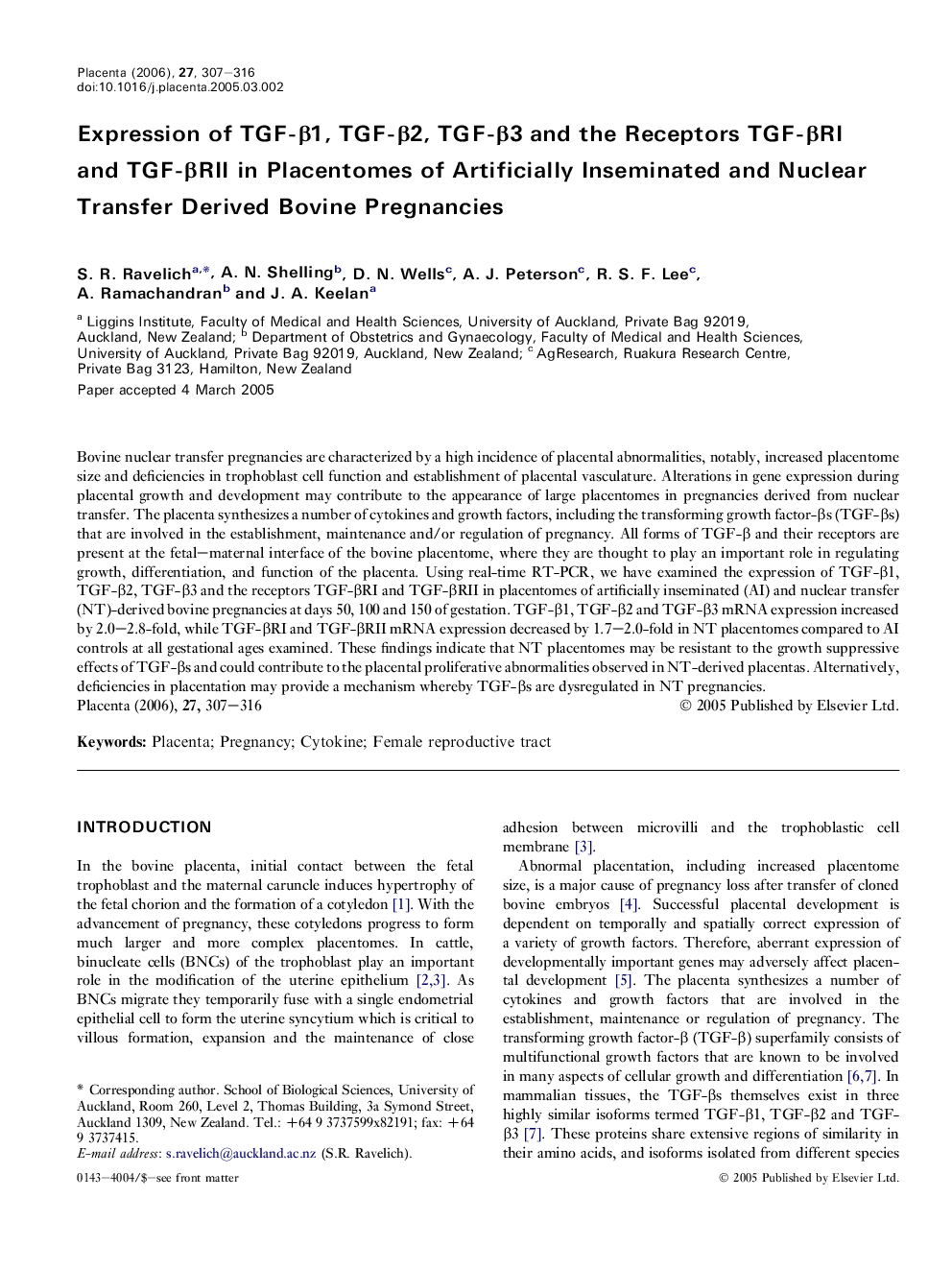| Article ID | Journal | Published Year | Pages | File Type |
|---|---|---|---|---|
| 2790172 | Placenta | 2006 | 10 Pages |
Abstract
Bovine nuclear transfer pregnancies are characterized by a high incidence of placental abnormalities, notably, increased placentome size and deficiencies in trophoblast cell function and establishment of placental vasculature. Alterations in gene expression during placental growth and development may contribute to the appearance of large placentomes in pregnancies derived from nuclear transfer. The placenta synthesizes a number of cytokines and growth factors, including the transforming growth factor-βs (TGF-βs) that are involved in the establishment, maintenance and/or regulation of pregnancy. All forms of TGF-β and their receptors are present at the fetal-maternal interface of the bovine placentome, where they are thought to play an important role in regulating growth, differentiation, and function of the placenta. Using real-time RT-PCR, we have examined the expression of TGF-β1, TGF-β2, TGF-β3 and the receptors TGF-βRI and TGF-βRII in placentomes of artificially inseminated (AI) and nuclear transfer (NT)-derived bovine pregnancies at days 50, 100 and 150 of gestation. TGF-β1, TGF-β2 and TGF-β3 mRNA expression increased by 2.0-2.8-fold, while TGF-βRI and TGF-βRII mRNA expression decreased by 1.7-2.0-fold in NT placentomes compared to AI controls at all gestational ages examined. These findings indicate that NT placentomes may be resistant to the growth suppressive effects of TGF-βs and could contribute to the placental proliferative abnormalities observed in NT-derived placentas. Alternatively, deficiencies in placentation may provide a mechanism whereby TGF-βs are dysregulated in NT pregnancies.
Related Topics
Life Sciences
Biochemistry, Genetics and Molecular Biology
Developmental Biology
Authors
S.R. Ravelich, A.N. Shelling, D.N. Wells, A.J. Peterson, R.S.F. Lee, A. Ramachandran, J.A. Keelan,
